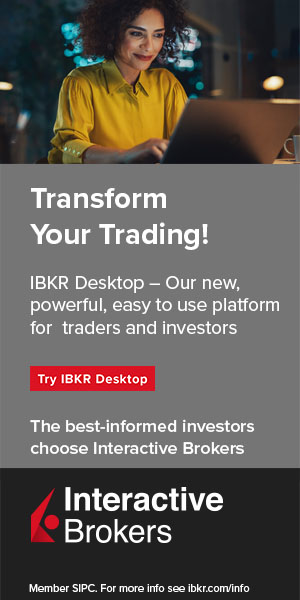We’ll delve into the foundational layer of blockchain networks and applications, specifically Layer 0. We’ll explore its industry relevance and highlight notable examples, such as Venom. Layer 0 in blockchain optimizes network infrastructure and enhances the scalability, security, and performance of applications. It operates at the lowest level of the networking stack, incorporating hardware, network protocols, and operating systems.

Layer 0 is the foundational framework for all blockchain protocols, facilitating effective communication and the operation of Layer 1 blockchains. It enables decentralized applications and data source validation and serves as a crucial building block of the blockchain ecosystem.
Layer 0 blockchains aim to overcome the challenges of traditional networks: low throughput, high fees, and slow processing times. They offer solutions to enhance blockchain adoption in mainstream applications.
What are Layers in blockchain?
The blockchain ecosystem comprises layers that collaborate to establish a secure and decentralized network, often referred to as “blockchain stacks” or “protocol stacks.” These layers encompass Layer 0, Layer 1, Layer 2, and
Layer 3.
Layer 0: Layer 0 blockchains optimize network infrastructure and serve as the foundation for blockchain networks. They address industry challenges like scalability and interoperability. Layer 0 blockchains serve as the foundational layer for blockchain networks, driving advancements in network infrastructure, scalability, and interoperability. Their development and adoption contribute to the growth and maturation of the blockchain industry, fostering a more scalable, interconnected, and user-friendly environment for blockchain applications and services. Examples of Layer 0 blockchains include Avalanche (AVAX), Cosmos (ATOM), Polkadot (DOT), and Venom.
Layer 1: Layer 1, also referred to as the “base layer,” constitutes the core of the blockchain. It encompasses the foundational technology and protocols that underpin the blockchain network, encompassing elements like the consensus algorithm, cryptographic protocols, and data structures. Prominent Layer 1 blockchains include Bitcoin (BTC), Ethereum (ETH), and Litecoin (LTC).
Layer 2: Layer 2, built upon Layer 1, encompasses protocols and technologies that bolster the scalability, speed, and functionality of the blockchain network. Noteworthy Layer 2 solutions comprise payment channels, sidechains, and off-chain protocols. These solutions aim to alleviate network congestion and amplify transaction throughput on the blockchain network.
Layer 3: Layer 3, also referred to as the “dApps layer” or application layer, encompasses decentralized applications and smart contracts that are constructed on top of the blockchain network. Notable examples of Layer 3 applications include decentralized finance (DeFi) platforms, non-fungible token (NFT) marketplaces, and identity verification systems. Leveraging the underlying blockchain infrastructure’s security and decentralization, Layer 3 applications deliver novel and innovative services to users.
How Does the Layer 0 Protocol Function?
Layer 0 protocols form the blockchain network’s foundation, enabling the creation of secure, decentralized, and interoperable ecosystems. They offer essential infrastructure and consensus mechanisms that ensure network security and validity. Consensus mechanisms implemented by Layer 0 protocols may vary depending on the specific protocol.
Layer 0 protocols play a vital role in facilitating consensus mechanisms that allow network participants to reach agreement on the blockchain’s state. These mechanisms are crucial for maintaining the security and validity of the blockchain network. Layer 0 protocols often implement their own consensus mechanisms, which can vary depending on the specific protocol in use.
Layer 0 protocols are designed to tackle scalability challenges prevalent in the blockchain industry. Through innovative transaction processing and data storage techniques, these protocols enhance the speed and efficiency of blockchain networks. As a result, transaction processing is accelerated, and overall network scalability is improved.
What are the Key Elements of Layer 0?
The key elements of Layer 0 include the main chain, sidechains, and cross-chain.
1. The main chain, or relay chain, acts as the primary blockchain responsible for backing up and processing transaction data from Layer 1 networks.
2. Sidechains are independent Layer 1 blockchains that operate alongside the main chain. They possess their own tokens, consensus mechanisms, and blockchain protocols, potentially relying on the main chain for security.
3. The cross-chain transfer protocol comprises blockchain protocols facilitating secure information exchange between multiple independent blockchain networks. These protocols enable interoperability and facilitate asset and data transfers across different chains.
Examples of Layer 0 blockchains include Avalanche, Cosmos, Polkadot, and Venom.
Avalanche
Avalanche is a Layer 0 blockchain that employs the “Avalanche consensus protocol” for fast transactions and low fees. It aims to provide a robust DeFi infrastructure.
With a tri-blockchain architecture, Avalanche consists of three core chains: the Chain (C-Chain), Exchange Chain (X-Chain), and Platform Chain (P-Chain). These chains offer distinct functionalities, prioritizing security, low latency, and high throughput. X-Chain enables asset creation and trading; C-Chain handles smart contracts; and P-Chain coordinates validators and subnets.
Cosmos
Cosmos is a Layer 0 platform enabling an interconnected network of thousands of blockchains in the Cosmos Network. Its key feature is the Inter Blockchain Communication Protocol (IBC), which facilitates data and asset exchange across blockchains. Each independent blockchain in the network must meet minimum requirements for IBC compatibility, with no limits on network topography or consensus mechanisms. Developers can leverage the Cosmos SDK to build chains and applications within the ecosystem.
Polkadot
Polkadot is a Layer 0 blockchain that enables interoperability among multiple networks. Its unique architecture, called “parachains,” ensures scalability and security.
Polkadot allows developers to build their own blockchains within its protocol. The network consists of the Polkadot Relay Chain and independent parachains.
The Relay Chain acts as a bridge, facilitating efficient communication between parachains. It utilizes sharding to enhance transaction processing efficiency.
Developers can create custom parachains with unique tokens, consensus mechanisms, and features while leveraging Polkadot’s security and interoperability.
Conclusion
Layer 0 protocols in the blockchain industry offer promising solutions for scalability. By focusing on the underlying architecture, they can potentially overcome scalability challenges. Platforms like Horizen, Polkadot, and Cosmos demonstrate the hosting capabilities of decentralized applications and Layer 1 protocols.
Scalability solutions like sharding and dynamic partitioning enable high transaction volumes without compromising security or decentralization. However, these protocols are still in early development, and implementation and adoption will require time. Challenges remain, including interoperability and regulatory concerns.
Learn from market wizards: Books to take your trading to the next level


 Hot Features
Hot Features














